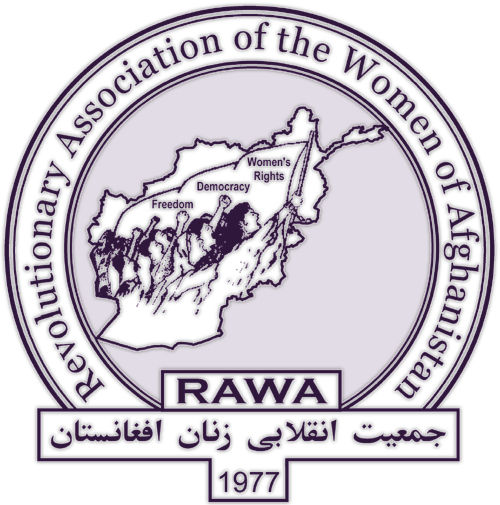politics of archaeology
Nuclear strike in Yemen? No, but the truth is bad
Gordon Duff's website Veterans Today (a soapbox for vulgar conspiranoia that has nothing to do with veterans' issues) has posted a truly terrifying video, purported to be of the massive explosion on Naqm mountain outside Yemen's capital Sana'a last week. A fiery mushroom cloud unfolds over the mountain as panicked onlookers are heard beseeching God in the foreground. Commentary says the video has been "analyzed by nuclear weapons experts" (unnamed, of course) who determined that it was a "neutron bomb that could only have been an Israeli attack." The Israelis are said to have carried out the attack at Saudi behest. The claim is arbitrary and utterly improbable—the neutron bomb is designed for one purpose: to kill massive numbers through radiation, while leaving property intact. It would make no sense to set it off over a mountain as opposed to in Sana'a itself if the aim was to kill massive numbers—and this is not an overwhelmingly Shi'ite area, so the Saudis would have no reason to do so, even if we ascribe the worst of intentions to them. Furthermore, there have been no reports of massive radiation deaths from the area over a week later. Nonetheless, the "report" (if we may so flatter it) is being posted by Facebook conspiranoids and has been picked up by such likely places as Pravda, Al Manar and (of course) Global Research.
ISIS blows up Syrian prison at Palmyra
ISIS militants on May 30 blew up the Tadmur prison complex in the central Syrian city of Palmyra, destroying an important symbol of government control. ISIS announced the destruction of the prison in a statement on social media, and posted pictures of huge clouds of smoke above the sprawling complex. The facility was reportedly emptied before it was destroyed. Days earlier, ISIS released photographs showing appalling conditions in the complex, which held dissidents and deserters from the Syrian army. Photos showed small cells with mold-streaked walls and no beds, plumbing or lighting. Nonetheless, the destruction was protested by leaders of Syria's civil resistance as eliminating substantiation of dictator Bashar Assad's crimes. "ISIS has wiped out evidence of the crimes of the Assad clan by blowing up the infamous Palmyra prison," said Syrian opposition member Mohammad Sarmini on Twitter. The fate of the detainees at the complex is not clear.
Syria: Nusra Front announces drive on Damascus
An Islamist rebel coalition led by al-Qaeda affiliate Nusra Front has made gains in northwestern Syria in recent weeks, taking the city of Idlib and the town of Jisr al-Shughour, and bringing them to the edge of government-held coastal areas north of the capital. "We will continue our focus on Damascus and on toppling this regime," Nusra leader Abu Mohamad al-Golani told Al Jazeera May 27. "I assure you, Assad's fall won't take a long time."
ISIS in Palmyra: lives versus archaeology?
ISIS forces on May 20 seized the Syrian city of Palmyra, known in Arabic as Tadmur and famed for its ancient ruins—built by an Arab civilization 2,000 years ago in the Greco-Roman style. The Local Coordination Committees civil resistance network said the entire city came under ISIS control after pro-regime forces staged a "strategic retreat." As ISIS has advanced on Palmyra, there has been growing concern that its archaeological treasures will fall victim to the systematic ISIS campaign of cultural cleansing that has already seen partial destruction of the Iraqi sites of Hatra and Nimrud. UNESCO director general Irina Bokova said: "The fighting is putting at risk one of the most significant sites in the Middle East, and its civilian population. I reiterate my appeal for an immediate cessation of hostilities at the site. I further call on the international community to do everything in its power to protect the affected civilian population and safeguard the unique cultural heritage of Palmyra."
Israeli court approves Bedouin land confiscation
Separate Israeli Supreme Court decisions issued on May 5 open the way for state authorities to forcibly evict residents of two Arab villages from their homes. The inhabitants of both villages, one in Israel and the other in the occupied West Bank, have previously been displaced following actions by Israeli authorities. "It is a sad day when Israeli Supreme Court decisions provide legal cover for forced evictions, as in the case of these two villages," said Sarah Leah Whitson of Human Rights Watch. "The Israeli government should let these communities stay where they are, not force them to move yet again."
ISIS advances on Palmyra archaeological site
The Syrian Observatory for Human Rights reports that ISIS forces are advancing on the ruins of the ancient city of Palmyra, a UN World Heritage Site, where it is feared they will carry on their campaign against the archaeological treasures of the Fertile Crescent. ISIS militants have already seized parts of adjacent city of Tadmur. Palmyra and Tadmur are situated in a strategic area on the road betwee Damascus and the contested eastern city of Deir al-Zour, and close to gas fields (BBC News) ISIS militants have executed 26 civilians in villages they seized near Palmyra, according to the Syrian Observatory. "Daesh executed 26 civilians, including at least 10 by beheading, after accusing them of collaborating with the Syrian regime," said the Observatory. (AFP)
ISIS franchise: Nigeria to Yemen to Pakistan
Over the past two months, the ISIS international franchise has made foreboding gains from West Africa to the Indian subcontinent. In Nigeria, Boko Haram pledged allegiance to ISIS in March, according to the anti-terrorist monitoring group SITE. The pledge, attributed to Boko Haram leader Abubakar Shekau, was made in an audio posted on Twitter (and since removed). "We announce our allegiance to the Caliph... and will hear and obey in times of difficulty and prosperity," SITE quoted the statement. (Al Jazeera, March 8)
Cultural legacy lost as ISIS torches Mosul library
ISIS forces put the Mosul library to the torch Feb. 22—over vociferous pleas and protests from the city's notables. "ISIS militants bombed the Mosul Public Library," said Ghanim al-Ta'an, director of the library. "They used improvised explosive devices." Among the many thousands of books it housed, more than 8,000 rare old books and manuscripts were burned. The library was established in 1921, the same year that saw the birth of the modern Iraq. Among its lost collections were manuscripts from the 18th century, Syriac (Aramaic) language books printed in Iraq's first printing house in the 19th century, Iraqi newspapers from the early 20th century, and some rare antiques such as an astrolabe used by early Arab mariners. The library had hosted the personal libraries of more than 100 notable Mosul families over the past century. Bloggers and activists in Mosul got out the word of the building's destruction over the Internet. (Fiscal Times via Yahoo News, Feb. 23)















Recent Updates
1 day 16 hours ago
2 days 14 hours ago
2 days 20 hours ago
2 days 23 hours ago
4 days 17 hours ago
4 days 19 hours ago
6 days 1 min ago
6 days 7 min ago
6 days 18 min ago
1 week 15 hours ago